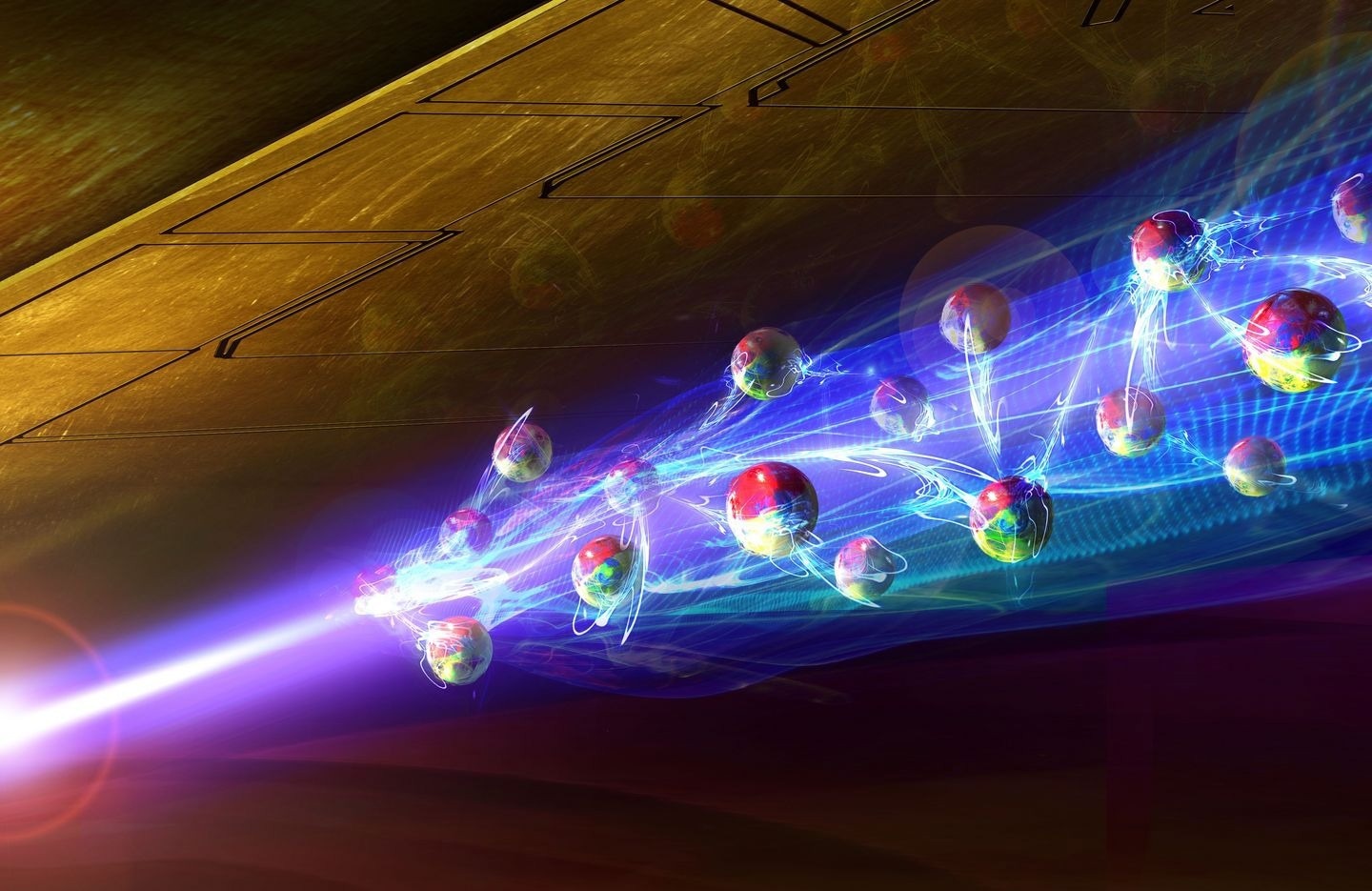Reviewed by Alex SmithAug 2 2022
Atoms could be made to attract each other using light. For the first time, a group from Vienna and Innsbruck have been able to calibrate this binding state of light and matter.
 The atoms are polarized by the beam of light and start to attract each other. Image Credit: © Harald Ritsch / TU Wien
The atoms are polarized by the beam of light and start to attract each other. Image Credit: © Harald Ritsch / TU Wien
For the first time, a very unique bonding state among atoms has been formed in the laboratory: Using a laser beam, atoms could be polarized so that they are positively charged on one side and negatively charged on the other side.
This makes them attract one another, thereby forming a very unique bonding state — which is much feebler than the bond shared between two atoms in a normal molecule, but yet quantifiable. The attraction comes from the polarized atoms themselves, but it is the laser beam that enables them to function as such — in a sense, it is a “molecule” of both light and matter.
Hypothetically, this effect has been foreseen for a long time, but now for the first time, researchers at the Vienna Center for Quantum Science and Technology (VCQ) at TU Wien, in collaboration with the University of Innsbruck, have been efficient in quantifying this striking atomic bond. This interaction is advantageous for manipulating exceptionally cold atoms, and the effect can also perform a role in the molecules’ creation in space. The findings have now been reported in the scientific journal “Physical Review X.”
Positive and Negative Charge
A positively charged atomic nucleus is bounded by negatively charged electrons in an electrically neutral atom. These electrons enclose the atomic nucleus like a cloud.
If you now switch on an external electric field, this charge distribution shifts a little. The positive charge is shifted slightly in one direction, the negative charge slightly in the other direction, the atom suddenly has a positive and a negative side, it is polarized.
Philipp Haslinger, Professor, Technische Universität Wien
His study at the Atominstitut at TU Wien is funded by the FWF START program.
As light is simply an electromagnetic field that can be very quickly altered, it is also likely to form this polarization effect using laser light. While many atoms are next to one another, the laser light polarizes all of them in the same way — negative on the right and positive on the left, or vice versa. In either case, two adjacent atoms turn different charges towards one another, which leads to a force of attraction.
Experiments with the Atom Trap
This is a very weak attractive force, so you have to conduct the experiment very carefully to be able to measure it. If atoms have a lot of energy and are moving quickly, the attractive force is gone immediately. This is why a cloud of ultracold atoms was used.
Mira Maiwöger, Publication First Author, Technische Universität Wien
On an atom chip in a magnetic trap, the atoms are first collected and cooled. This technique was formulated at the Atominstitut in the team of Prof. Jörg Schmiedmayer. Later, the trap is turned off, and it discharges the atoms in free fall.
The atom cloud is “ultracold,” at less than a millionth of a Kelvin. However, it has sufficient energy to enlarge in the fall. But, if a laser beam is used to polarize the atoms during this phase and thus an attractive force is created between them, this expansion of the atomic cloud is slowed down - and this is how the attractive force is measured.
Quantum Laboratory and Space
“Polarizing individual atoms with laser beams is basically nothing new. The crucial thing about our experiment, however, is that we have succeeded for the first time in polarizing several atoms together in a controlled way, creating a measurable attractive force between them,” stated Matthias Sonnleitner. He set the theoretical groundwork for the study.
For controlling cold atoms, this force of attraction is a complementary tool. However, it can also be essential in astrophysics:
In the vastness of space, small forces can play a significant role. Here, we were able to show for the first time that electromagnetic radiation can generate a force between atoms, which may help to shed new light on astrophysical scenarios that have not yet been explained.
Philipp Haslinger, Professor, Technische Universität Wien
Journal Reference:
Maiwöger. M., et al. (2022) Observation of Light-Induced Dipole-Dipole Forces in Ultracold Atomic Gases. Physical Review X. 10.1103/PhysRevX.12.031018.